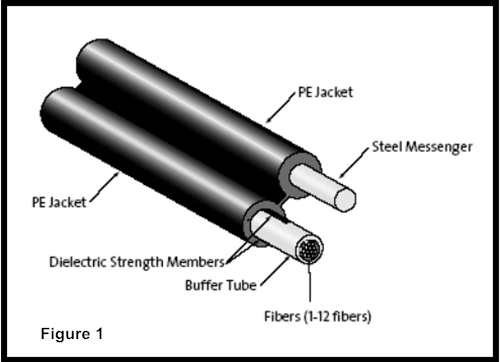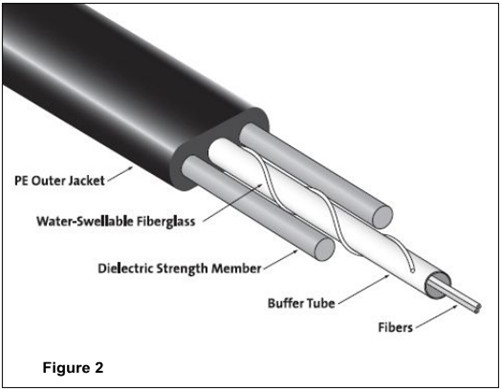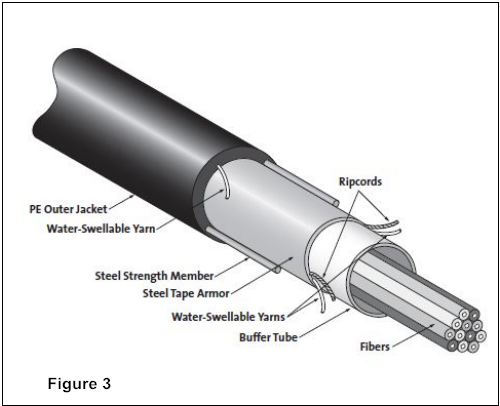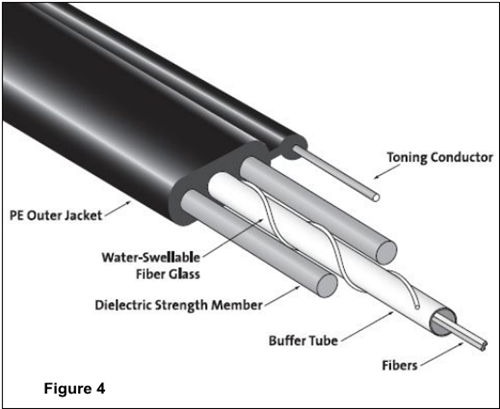Introduction
An emerging interest in fiber to the home (FTTH) networks has swept over the whole telecommunications industry. With continuing demand for more bandwidth, telecom service providers have begun to deploy optical fiber deeper into the network and closer to the subscriber residence. The drop cable connection serves as a key component in FTTH networks. Choosing the right drop cable interconnect solution will directly affect network reliability, operational flexibility and the economics of FTTH deployment. This article will highlight the various technical considerations which should be made when selecting optical drop cable for FTTH networks.
An emerging interest in fiber to the home (FTTH) networks has swept over the whole telecommunications industry. With continuing demand for more bandwidth, telecom service providers have begun to deploy optical fiber deeper into the network and closer to the subscriber residence. The drop cable connection serves as a key component in FTTH networks. Choosing the right drop cable interconnect solution will directly affect network reliability, operational flexibility and the economics of FTTH deployment. This article will highlight the various technical considerations which should be made when selecting optical drop cable for FTTH networks.
Typical Optical Drop Cable Design
Optical drop cable serves as the direct link from the service provider distribution network to the subscriber. This cable typically contains no more than 12 optical fibers, located loosely in a buffer tube. The following four cable designs presented in this article are the most commonly used nowadays. You can choose the most suitable one for your specific requirement.
Optical drop cable serves as the direct link from the service provider distribution network to the subscriber. This cable typically contains no more than 12 optical fibers, located loosely in a buffer tube. The following four cable designs presented in this article are the most commonly used nowadays. You can choose the most suitable one for your specific requirement.
1. Figure-8 Optical Drop Cable
Figure-8 optical drop cables are composed of two distinct subcomponents—a central tube cable fixed to a steel wire (see Figure 1). This cable design is to combine the installation of the messenger wire and optical cable into a single process. This cable is typically used in aerial applications.
Figure-8 optical drop cables are composed of two distinct subcomponents—a central tube cable fixed to a steel wire (see Figure 1). This cable design is to combine the installation of the messenger wire and optical cable into a single process. This cable is typically used in aerial applications.

2. All-dielectric Optical Drop Cable
All-dielectric optical drop cables have the optical fibers placed in a centrally located buffer tube. This drop cable design supports direct buried, conduit and aerial self-support application. The all-dielectric design (shown in Figure 2) is the most commonly used optical drop type today.
All-dielectric optical drop cables have the optical fibers placed in a centrally located buffer tube. This drop cable design supports direct buried, conduit and aerial self-support application. The all-dielectric design (shown in Figure 2) is the most commonly used optical drop type today.

3. Armored Optical Drop Cable
Armored optical drop cables also have the optical fibers placed in centrally located buffer tube. A protective metallic foil surrounds the buffer tube and provides an additional protective barrier for the optical fibers. A representative design is shown in Figure 3.
Armored optical drop cables also have the optical fibers placed in centrally located buffer tube. A protective metallic foil surrounds the buffer tube and provides an additional protective barrier for the optical fibers. A representative design is shown in Figure 3.

4. Toneable Optical Drop Cable
Toneable optical drop cables are similar to the Figure-8 design and composed of two distinct subcomponents. This cable design is to combine an all-dielectric cable for buried applications with location capability. An example of this type of cable structure is shown in Figure 4.
Toneable optical drop cables are similar to the Figure-8 design and composed of two distinct subcomponents. This cable design is to combine an all-dielectric cable for buried applications with location capability. An example of this type of cable structure is shown in Figure 4.

Tensile Strength
As we can see from the above figures, there are different types of strength members in optical drop cables. The strength member is used to ensure that no tensile stress is placed on the optical fiber during and after installation. It does not have physical limitations. But if tensile forces exceed the physical limitations of the cable, it will cause damage to the cable and possibly break the optical fiber. Excessive tensile loading may also create macrobends, causing the optical fiber to attenuate a signal.
As we can see from the above figures, there are different types of strength members in optical drop cables. The strength member is used to ensure that no tensile stress is placed on the optical fiber during and after installation. It does not have physical limitations. But if tensile forces exceed the physical limitations of the cable, it will cause damage to the cable and possibly break the optical fiber. Excessive tensile loading may also create macrobends, causing the optical fiber to attenuate a signal.
The standard tensile rating represents the maximum allowable installation load for the cable. The standard tensile ratings for products covered by this standard are 1335 N (300 lbf) for cables designed for installation by pulling, and 440 N (100 lbf) for cables that are direct-buried, placed in the ground by trenching equipment, or blown into ducts.
Factory-terminated vs. Field-terminated
Factory-terminated and field-terminated connectivity methods are both widely used for drop cable installations. Each alternative has its pros and cons. So how to choose?
Factory-terminated and field-terminated connectivity methods are both widely used for drop cable installations. Each alternative has its pros and cons. So how to choose?
Factory-terminated drop cables can provide high-performing, reliable connections. The controlled manufacturing process provides consistent fiber end-face geometry, resulting in low optical loss. Factory termination also keeps labor costs low by reducing installation time. However, compared to field-terminated alternatives, factory-terminated cables can be expensive. Because they are only available in pre-determined lengths, technicians have to run the risk of being caught in the field without the proper length of patch cable, causing installation delays and adding to labor costs. To sum up, this may be acceptable for indoor patch cords, but outdoor drop cable replacement can be expensive considering the cost of aerial or buried installation.
Field termination, on the other hand, uses reels of bulk cable cut to the appropriate length on-site, saving cost and rendering slack cable management systems moot. This development significantly reduces the required time for drop cable installation by permitting rapid connection of connectorized cable to terminals or closures via externally mounted bulkhead adapters. This in turn reduces the overall cost of subscriber connection, as well as allowing for proven durability and reliability within the drop section of the network.
Conclusion
Taking the above factors into consideration will ensure you make the right selection of optical drop cable, which is critical to ensure the long-term reliability of FTTH networks. Fiberstore supplies FTTH drop cables with SC/FC/LC connectors. With professional FTTH cabling system solution, you can get complete solution to build or expand fiber optic network capacity.
Taking the above factors into consideration will ensure you make the right selection of optical drop cable, which is critical to ensure the long-term reliability of FTTH networks. Fiberstore supplies FTTH drop cables with SC/FC/LC connectors. With professional FTTH cabling system solution, you can get complete solution to build or expand fiber optic network capacity.
Originally published at www.fiber-optic-solutions.com
评论
发表评论